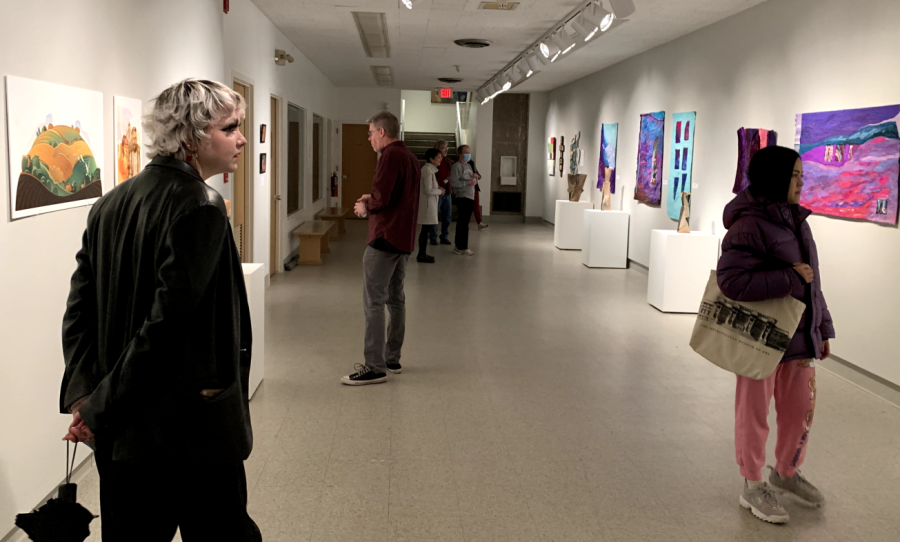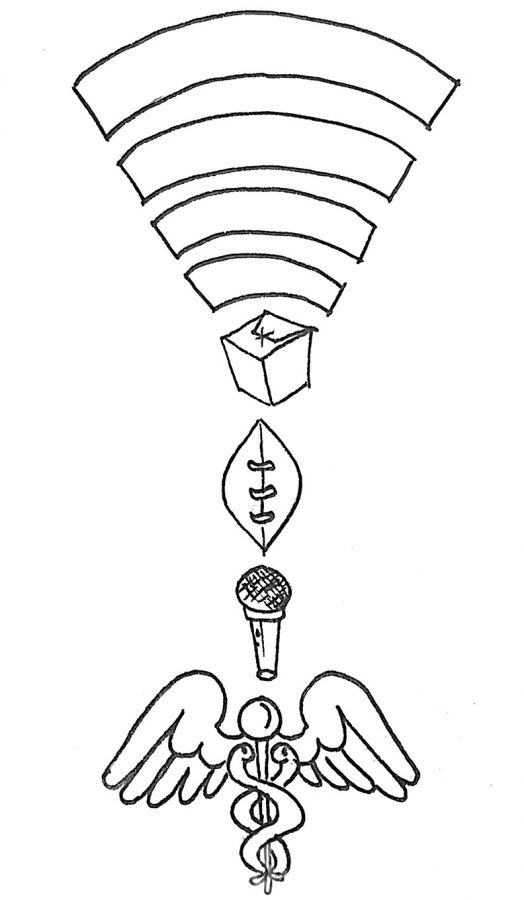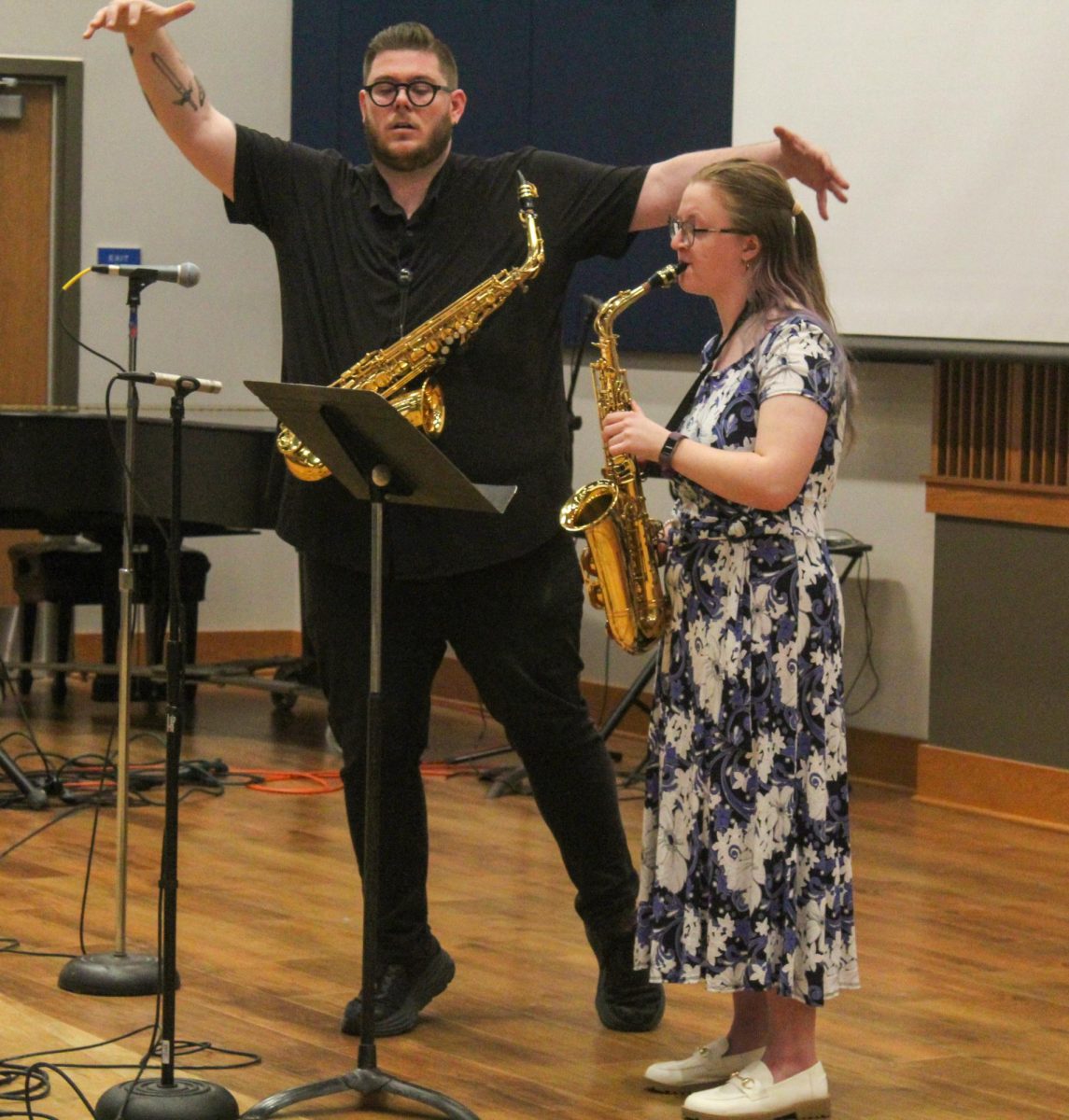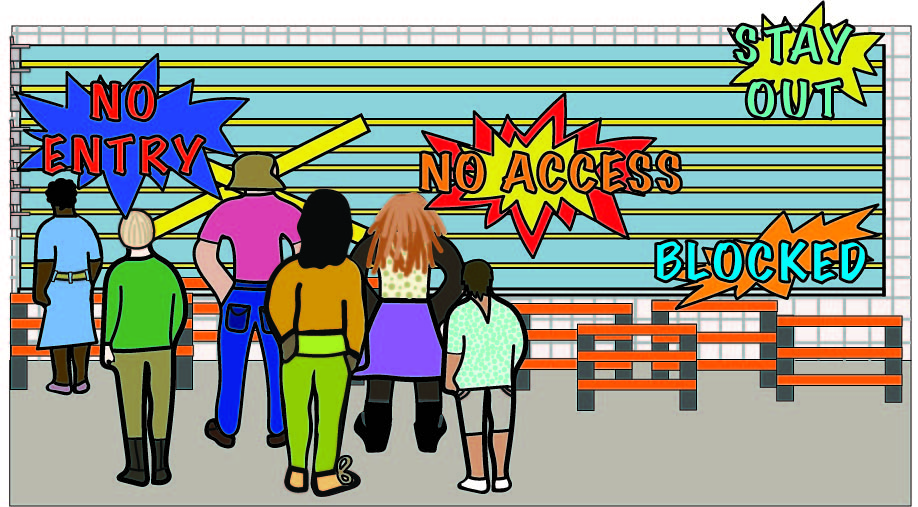On Nov. 4, 1922, one of the most significant discoveries of the modern world was unearthed.
British archaeologist Howard Carter and his crew completed a more than 30 year dream of finding the steps to the illustrious tomb of King Tutankhamun, which had been lost to the world for over 3,000 years.
The original artifacts are on display in the Egyptian Museum of Antiquities in Cairo, Egypt. Though it is illegal for the artifacts to leave Egypt, it was impossible for the “Tutmania” to be contained; obsession with the story of Tutankhamun impacted music, movies, and even fashion all across the world.
Now, the magic of Carter’s discovery has arrived here in the Quad Cities’ own Putnam Museum. Patrons are able to see replicas of over 1,000 featured pieces from the thousands of artifacts discovered within the gilded tomb.
The humongous exhibit takes three floors and all the special exhibition rooms, and has guided listening stops throughout and a brief cinematic portion.
The exhibit begins with the information of the discovery of the tomb, with infographics, photos and even a 3D model that shows how well ancient Egyptians managed to hide the illustrious tomb in the rubble from his fellow royal King Ramses VI.
For those who would rather read than listen, every stop comes with fully explicative text and photo illustrations, which are thoroughly informational without becoming too statistically dry.
The tour starts at the beginning, with Howard Carter, the man with dreams of a lost king and his struggle to find funding. Eventually, Carter found salvation in archaeology enthusiast Lord George Herbert, 5th Earl of Carnarvon.
Carter, in studying documentation from the ancient scripts of Egypt, noticed a ruling name that had only lasted for approximately 10 years.
Brief, forgotten, and belittled, he believed this missing king still lay somewhere in the sands of the famous Valley of Kings waiting for his great revival.
The adventurous duo would spend five years unsuccessfully searching the valley, nearly running dry on funds, water, manpower and hope. When the steps of the tomb were finally discovered, the archaeologists followed them to a door bearing the long-lost name of Tutankhamun.
Upon opening the mystic doors, they discovered an untouched treasure trove of artifacts, gifts and, most importantly, information.
Unlike many of the tombs within the Valley of Kings, that of Tutankhamen had been nearly untouched by tomb robbers before being permanently sealed and lost to the sands of time.
To this day, no one has ever been able to prove the cause of death of the young king, though the exhibit presents several possibilities presented by new studies and technologies being developed.
The key pieces have been scanned and recreated for display at famous museums. It is an extremely special occurrence` for the Putnam. So special, in fact, that they even opened their website URL at Tutnam.org to commemorate the occasion.
Patrons can see replicas of the tripartite sarcophagus and the four shrines that held the body of the boy-king, the paintings preserved from destruction by locked air.
Also on display are layouts of the look of the tomb exactly as it was when the doors were closed by the Egyptians and opened by Carter so much later.
The tomb was full of objects from all aspects of the young king’s life, from his writing utensils down to the toys and games with which he entertained himself and his peers. For those interested in learning about any of the aspects of the daily life of ancient Egyptians, the exhibits explain the processes and practices in exquisite detail.
At the end of the adventure through the Putnam, patrons can return their listening wands and check out the miniature shop set up specifically for the Putnam exhibit.
Due to the extended length of the exhibit, plan to have at least 90 minutes to be able to fully absorb the massive font of information presented.
The Tut Exhibit will be on display at the Putnam through September 2016. Hours are 10-5 Monday through Saturday, and 12-5 on Sundays, with tickets costing $9 with an Augie ID.
For more information, check out their special event webpage at www.tutnam.org.




















































































































